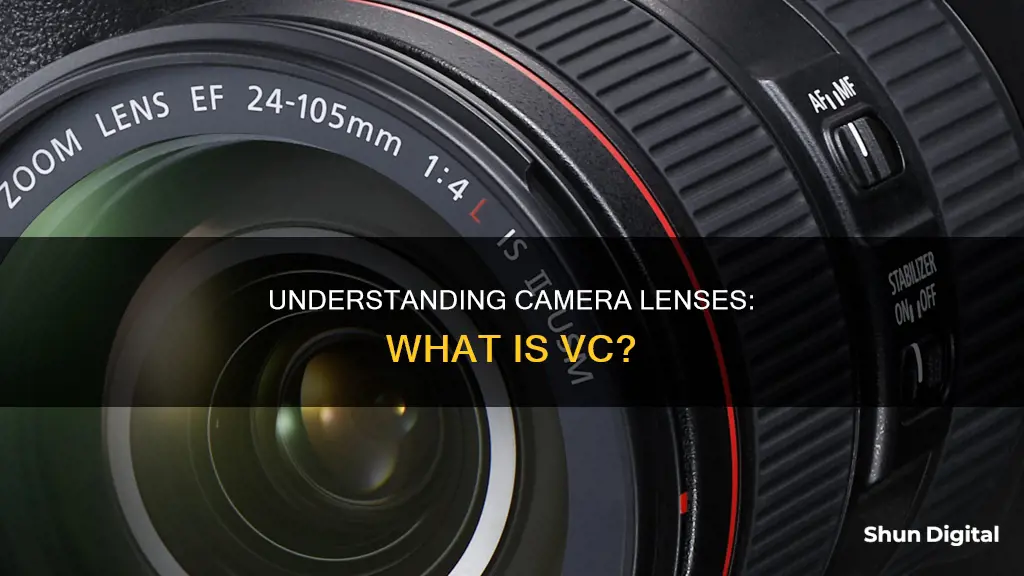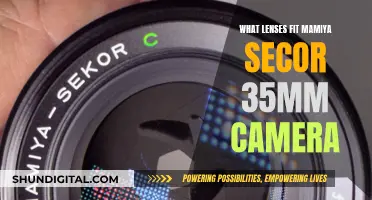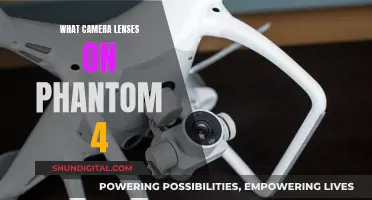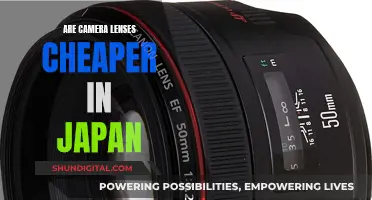
VC stands for Vibration Compensation and is a feature of Tamron lenses. It is a tri-axial image stabilizer that reduces the effects of camera vibrations and shake during handheld photography. VC is particularly useful when panning, and when shooting in low-light conditions, as it helps to deliver a stable viewfinder image. It also allows the use of slower shutter speeds.
| Characteristics | Values |
|---|---|
| What does VC stand for? | Vibration Compensation |
| What does VC do? | Minimizes the effects of camera vibrations and shake of hand-held photography |
| When to use VC? | When using handheld, turn VC on. When using a tripod, turn VC off. |
| How does VC work? | Uses a three-coil system to electromagnetically drive the lens element that compensates for vibration, gliding smoothly on three balls with little friction |
What You'll Learn

VC stands for Vibration Compensation
Vibration Compensation works by using a tri-axial image stabiliser and a three-coil system to electromagnetically drive the lens element that compensates for vibration. This system glides smoothly on three balls with little friction, which helps to keep the camera stable. The latest Tamron lenses also use AI technologies to choose the compensation characteristic for videography.
Vibration Compensation is especially useful for photographers who want to shoot handheld in low-light conditions without having to worry about camera shake affecting their images. It can also be helpful when using a tripod, as it can provide additional stabilisation in windy conditions or when using a remote shutter.
However, there are some situations where it may be recommended to turn off Vibration Compensation. For example, when shooting with the bulb setting or taking panning shots of moving subjects, Tamron recommends turning off VC to avoid introducing errors or impairing the focus.
Infinity Focus: Are Camera Lenses Capable?
You may want to see also

VC reduces blur in your image
VC stands for Vibration Compensation. It is a feature of some Tamron lenses that reduces blur in your image by compensating for the small movements we all make when using cameras handheld. VC is a tri-axial image stabilizer that minimizes the effects of camera vibrations and shake during hand-held photography. It also allows you to use slower shutter speeds.
VC is particularly useful when panning. While some sources suggest that VC should be turned off when panning, others argue that it is not necessary. Tamron literature specifically states that VC is effective when panning and that it automatically detects this and compensates. However, it is important to note that in some cases, VC may introduce errors and potentially increase the probability of image blur when shooting fast-moving subjects with a panning technique.
When using a tripod, it is generally recommended to turn VC off unless there are factors that may cause instability, such as wind. In most cases, when using a tripod for wildlife photography, using a remote shutter or timer may not be realistic, so VC is often left on.
Overall, VC is a valuable feature that helps reduce blur in your images, making it easier to capture sharp and stable photos, especially in handheld shooting scenarios.
Pentax Lenses: Will They Fit Your New Camera?
You may want to see also

VC is effective when panning
VC stands for Vibration Compensation, and it is a feature of some camera lenses that helps stabilise the camera and reduce camera shake. VC is particularly useful when shooting handheld, as it allows for slower shutter speeds and reduces the likelihood of blurry images.
When it comes to panning, VC can be very effective in compensating for camera shake and ensuring sharper pictures. Panning involves following a moving subject with your camera, and VC helps to stabilise the image and reduce blur. While some sources suggest turning off VC when panning to avoid introducing errors or impairing focus, others argue that VC is specifically designed to handle such situations and can result in much sharper images.
The effectiveness of VC when panning may depend on various factors, including the specific camera and lens model, the speed of the moving subject, and the shutter speed. In general, VC is designed to detect and compensate for camera movements, making it a useful feature for panning shots.
It is always a good idea to refer to the camera's manual or the lens manufacturer's guidelines to understand the specific capabilities and limitations of the VC feature for your particular equipment.
Projector Lenses: Can They Double as Cameras?
You may want to see also

VC is a Tamron proprietary development
VC stands for Vibration Compensation, a Tamron proprietary development. It is a tri-axial image stabilizer that minimizes the effects of camera vibrations and shake during handheld photography. This is especially useful when shooting in low-light conditions, such as indoors or at night, as it helps deliver a stable viewfinder image. The VC mechanism uses a three-coil system to electromagnetically drive the lens element that compensates for vibration, gliding smoothly on three balls with minimal friction. This simple mechanical structure is one of the secrets to Tamron's compact lenses.
The VC feature is particularly effective when panning, as it automatically detects and compensates for movement. However, it is important to note that in certain cases, such as when shooting fast-moving subjects with a panning technique, VC may introduce errors and potentially increase the probability of image blur. In such cases, it is recommended to turn off the VC switch to avoid impairing the focus.
The Dual MPU (Micro-Processing Unit) in Tamron lenses provides precise AF performance and consistent powerful VC image stabilization. The dual microchips in the MPU process digital signals from the VC image stabilization and autofocus separately at maximum speed, allowing for lightning-fast interpretation and implementation of commands from the camera and AF motor.
Overall, VC is an essential feature for photographers who want to minimize camera shake and improve image quality, especially in low-light or handheld shooting situations.
Cleaning Camera Lenses: Distilled Water Method
You may want to see also

VC minimises the effects of camera vibrations and shake
VC stands for Vibration Compensation, a feature that minimises the effects of camera vibrations and shake in handheld photography. VC is a tri-axial image stabiliser that reduces blur in your image by compensating for the small movements we all make when using cameras handheld. VC allows you to use slower shutter speeds and achieve sharper pictures when panning.
VC is particularly useful when shooting with a tripod in windy conditions or when using the remote shutter, as it helps to stabilise the lens. It is also beneficial when shooting in low-light conditions, such as indoors or at night, as it provides a stable viewfinder image with excellent tracking. The latest Tamron lenses use AI technologies to choose the compensation characteristic for videography.
However, it is important to note that VC may not be effective in certain cases, such as when using the bulb setting or taking panning shots of fast-moving subjects. In these situations, it is recommended to turn the VC switch off to avoid introducing errors or impairing the focus.
Overall, VC is a valuable feature that helps reduce camera shake and improve image quality, making it easier to capture sharp and stable photos and videos, especially in handheld and low-light situations.
Choosing the Right Camera Lenses: A Quick Guide
You may want to see also
Frequently asked questions
VC stands for Vibration Compensation.
Vibration Compensation minimises the effects of camera vibrations and shakes from handheld photography. It also allows you to use slower shutter speeds.
VC should be turned on when using the camera handheld and turned off when using a tripod.
The Tamron SP 150-600mm F/5-6.3 Di VC USD lens uses Vibration Compensation.







